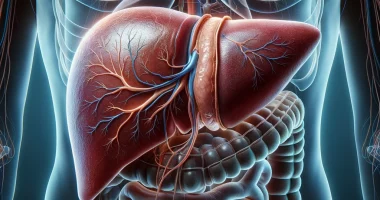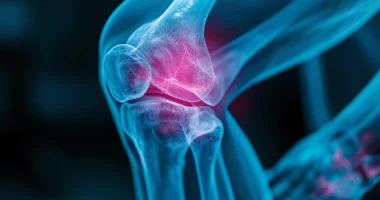Brain edema
Definition
Brain edema is a rapidly developing accumulation of fluid in cerebral tissues without adequate medical care, leading to a fatal outcome. The basis of the clinical picture is a gradual or rapidly increasing deterioration of the patient’s condition and deepening disorders of consciousness, accompanied by meningeal signs and muscle atonia. The diagnosis is confirmed by an MRI or CT scan of the brain. Additional examination is carried out to find the cause of edema. Therapy begins with dehydration and maintenance of metabolism of cerebral tissues, combined with treatment of the causative disease and prescription of symptomatic drugs. According to indications, surgical treatment may be urgent (decompression trepanation, ventriculostomy) or delayed (removal of the tumor, bypass).
General information
Brain edema is not an independent nosological unit but is a secondary pathological process that develops as a complication of a number of diseases. Edema of other body tissues is a fairly common phenomenon unrelated to urgent conditions. In the case of the brain, edema is a life-threatening condition because, being in the confined space of the skull, cerebral tissues do not have the opportunity to increase in volume and are compressed. Due to the multiple etiological factors of cerebral edema, they are encountered by specialists in neurology and neurosurgery, as well as traumatologists, neonatologists, oncologists, and toxicologists.
Causes of cerebral edema
Most commonly, cerebral edema develops from trauma or organic damage to the brain tissue. Such conditions include severe brain injury (brain contusion, skull base fracture, intracerebral hematoma, subdural hematoma, diffuse axonal injury, brain surgery), extensive ischemic stroke, hemorrhagic stroke, subarachnoid hemorrhage and ventricular hemorrhage, primary brain tumors (medulloblastoma, hemangioblastoma, astrocytoma, glioma, etc.) and its metastatic lesions.) and its metastatic lesion. Cerebral edema is possible as a complication of infectious diseases (encephalitis, meningitis) and purulent processes of the brain (subdural empyema).
In addition to intracranial factors, cerebral edema can lead to anasarca, which can result from heart failure, allergic reactions (Quincke’s edema, anaphylactic shock), acute infections (toxoplasmosis, scarlatina, swine flu, measles, mumps), endogenous intoxication (in severe diabetes mellitus, acute renal failure, liver failure), and poisoning by various poisons and some drugs.
In some cases, cerebral edema is observed in alcoholism, which is associated with sharply increased vascular permeability. In newborns, cerebral edema can be caused by severe toxemia of the pregnant woman, intracranial birth trauma, umbilical cord entanglement, and prolonged labor.
Classification
Due to the peculiarities of pathogenesis, cerebral edema is divided into four types: vasogenic, cytotoxic, osmotic, and interstitial. The most common type is vasogenic cerebral edema, which is based on increased permeability of the blood-brain barrier. In pathogenesis, the transition of fluid from the vessels to the white matter of the brain plays the leading role. Vasogenic edema occurs perifocally in the area of tumor, abscess, ischemia, surgical intervention, etc.
Cytotoxic brain edema results from glial cell dysfunction and disturbances in the osmoregulation of neuronal membranes. It develops mainly in the gray matter of the brain. Its causes may include intoxication (including cyanide and carbon monoxide poisoning), ischemic stroke, hypoxia, and viral infections.
Osmotic cerebral edema occurs when the osmolarity of cerebral tissues increases without disrupting the blood-brain barrier. It occurs in hypervolemia, polydipsia, drowning, metabolic encephalopathies, and inadequate hemodialysis. Interstitial edema appears around the cerebral ventricles when the liquid part of the liquor leaks through their walls.
Symptoms of cerebral edema
The leading sign of cerebral edema is impaired consciousness, which can range from mild sopor to coma. The increasing depth of impairment indicates the progression of edema. Loss of consciousness may be the first symptom, and its duration can differentiate it from usual fainting. Often, the progression of edema is accompanied by convulsions, which, after a short period of time, are replaced by muscle atonia. Examination reveals shell symptoms characteristic of meningitis.
In cases where cerebral edema occurs against the background of chronic or gradually developing acute cerebral pathology, the consciousness of patients in the initial period may be preserved. Then, the main complaint is an intense headache with nausea and vomiting, possible motor disorders, visual disturbances, movement discoordination, dysarthria, and hallucinatory syndrome.
Paradoxical breathing (deep and shallow breaths, variability of time intervals between breaths), sharp arterial hypotension, pulse instability, and hyperthermia over 40°C are formidable signs of brainstem compression. Divergent strabismus and “floating” eyeballs indicate dissociation of subcortical structures from the cerebral cortex.
Diagnosis of cerebral edema
Progressive deterioration of the patient’s condition and increasing impairment of consciousness accompanied by meningeal symptoms allow the neurologist to suspect brain edema. Confirmation of the diagnosis is possible with CT or MRI of the brain. Carrying out a diagnostic lumbar puncture is dangerous for the dislocation of cerebral structures with compression of the brain stem in the greater occipital foramen. Collecting anamnestic data, assessing neurological status, clinical and biochemical blood tests, and analyzing the results of neuroimaging studies allow us to conclude the cause of cerebral edema.
Since cerebral edema is an urgent condition requiring emergency medical care, its initial diagnosis should take a minimum of time and should be carried out in inpatient settings against the background of therapeutic measures. Depending on the situation, it is carried out in the intensive care unit or intensive care unit.
Treatment of cerebral edema
The priority areas in treating cerebral edema are dehydration, improvement of cerebral metabolism, elimination of the underlying cause of edema, and treatment of associated symptoms. Dehydration therapy aims to remove excess fluid from cerebral tissues. It is carried out by intravenous infusion of mannitol or other osmotic diuretics, followed by administration of loop diuretics (torasemide, furosemide). Additional 25% magnesium sulfate and 40% glucose solution administration potentiate diuretics’ effect and supplies cerebral neurons with nutrients.
To improve cerebral metabolism, oxygen therapy (if necessary—ventilation), local hypothermia of the head, and the administration of metabolites (cortexin, citicoline) are performed. Corticosteroids (prednisolone, hydrocortisone) strengthen the vascular wall and stabilize cell membranes.
Depending on the etiology of cerebral edema, its complex treatment includes detoxification measures, antibiotic therapy, tumor removal, elimination of hematomas and areas of traumatic brain crush, and shunt operations (ventriculoperitoneal drainage, ventriculocisternostomy, etc.). Surgical treatment is generally carried out only to stabilize the patient’s condition.
Symptomatic therapy, which aims to control individual manifestations of the disease, is carried out by prescribing antiemetics, anticonvulsants, analgesics, etc. When indicated, a neurosurgeon may perform decompressive cranial trepanation, external ventricular drainage, or endoscopic removal of hematoma to reduce intracranial pressure.
All these treatment options are available in more than 480 hospitals worldwide (https://doctor.global/results/diseases/brain-edema). For example, Decompressive craniectomy can be performed in 22 clinics across Turkey for an approximate price of $10.5 K (https://doctor.global/results/asia/turkey/all-cities/all-specializations/procedures/decompressive-craniectomy).
Prognosis
Brain edema is reversible in the initial stage, but as it progresses, it leads to irreversible changes in brain structures—death of neurons and destruction of myelin fibers. The rapid development of these disorders determines that completely eliminating edema with 100% recovery of brain functions is possible only in its toxic genesis in young and healthy patients who are timely delivered to a specialized department. Independent regression of symptoms is observed only in mountain cerebral edema if the patient is timely transported from the altitude where it developed.
However, in the vast majority of cases, surviving patients have residual effects of brain edema. They can vary considerably from subtle symptoms (headache, increased intracranial pressure, absent-mindedness, forgetfulness, sleep disorders, depression) to pronounced disabling disorders of cognitive and motor functions and the mental sphere.


